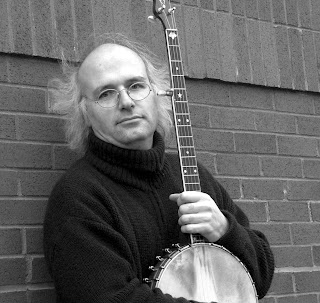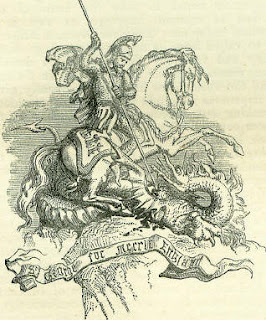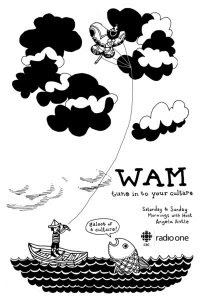While I am far from an expert on the matter, I have pulled together a little review. Note that everything that follows is personal opinion, and if you read the Vermont Folklife Center page, that author has varying opinions. Your best bet is always to figure out exactly what you will be using the recorder for, ask around and see what people are using for similar project, and to see if you can test out a recorder in a field situation before you spend your money.
 I personally use the Edirol R-09 WAV/MP3 recorder. I bought it at a local music store over a year ago, and I like it. I’ve used it mostly for recording storytelling events, either by using the built in mic, or by patching it in to a sound board using an inexpensive cable and jack adaptor bought from The Source. The Edirol is roughly the size and weight of a pack of cards, and I find the interface fairly easy to use. I recorded the 2007 World Storytelling Day Concert using the Edirol plugged into the headphone jack of a professional soundboard, and was quite pleased with the quality of the recording. I am currently using it, with the built in mic, to record stories told by storytelling students here in St. John’s as part of an ArtSmarts project, and will post a link to those recordings when they are placed online.
I personally use the Edirol R-09 WAV/MP3 recorder. I bought it at a local music store over a year ago, and I like it. I’ve used it mostly for recording storytelling events, either by using the built in mic, or by patching it in to a sound board using an inexpensive cable and jack adaptor bought from The Source. The Edirol is roughly the size and weight of a pack of cards, and I find the interface fairly easy to use. I recorded the 2007 World Storytelling Day Concert using the Edirol plugged into the headphone jack of a professional soundboard, and was quite pleased with the quality of the recording. I am currently using it, with the built in mic, to record stories told by storytelling students here in St. John’s as part of an ArtSmarts project, and will post a link to those recordings when they are placed online.Delf Hohmann is a singer, musician, folklorist and coordintor of the Cape St. Mary's Performance Series, who also uses the Edirol. He uses it for live recordings, fieldwork, and radio assignments. I asked him for his thoughts, and this is what he wrote:
It is small enough to fit in a shirt pocket, and it is an easy to handle, straightforward recording device with no extra knick-knacks. It works well with external microphones. The built in ones are fairly good, or good enough for recording of speech, yet, they are not good enough to make a high-end music/sound recording. The internal software version 1.3 (downloadable from the Edirol website) allows for the use of a 8GB SDHD card, which provides 12hrs of CD quality (16 bit, 44.1kHz) recording (with SanDisk Extreme III (6) 12hrs 50min). It takes Ni-Mh rechargerables or AA batteries. The only disadvantage is the machine's overall flimsyness. It is not very robust and needs carefull handling, i.e. I wouldn't suggest to drop it on the floor. The cover for AA-battery bay and the SD-card needs careful handling. In the slightly larger new version, the "Edirol R-09HR" this problem has been fixed by placing the battery bay on the back of the recorder - the "Edirol R-09HR" has an overall stronger casing.
Andrea O'Brien is a researcher and project officer for the Heritage Foundation of Newfoundland and Labrador. She is using the Zoom H2 Handy Recorder
When I first began my folklore studies back in the early 1990s, the hand-held cassette recorder was the way to go when it came to field recordings. While that compact gadget saw me through university, I lately realized that I would have to move into the digital age. After some searching, I recently bought a Zoom H2 and I’m impressed with its usability and recording quality. The Zoom H2 is compact, lightweight and has the capacity to record on four built-in microphones for 360 degree recording. Recording length varies by the size of the memory card you use and the format you choose (WAV or MP3). Recordings can be saved to a PC or Mac. The Zoom H2 comes with great accessories, including a tripod stand, microphone adaptor and wind screen. It also comes with an AC adaptor, but two AA batteries will provide 4 hours of recording time. I have used the Zoom H2 for voice recordings only, but it can also be used to record multi-instrument performances. The variety of menu options was daunting at first, but one read through the instruction booklet provided the basic knowhow I needed for voice recordings. For the student or researcher on a budget, the Zoom H2 offers great recording at a low price. I purchased mine at a local music shop for under $250.00.
.





